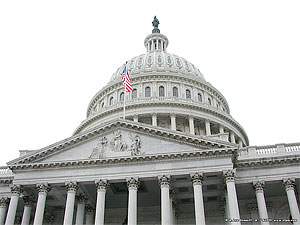 It would be easy to think that the 2007 Energy Bill, signed by President Bush at the end of last year, was all about automotive fuel economy. The legislation that requires fleet-wide average fuel economy for cars and light trucks to reach 35 miles per gallon by 2020 has generated a lot of buzz. On the negative side, the lack of strong support for renewable fuels such as wind and solar has generated some buzz as well. I cannot find anything in the Bill about renewing solar and conservation tax credits for homes, and that is a big, big omission.But there is a lot in the bill that is positive for residential buildings--not enough to tackle problems like our addiction to fossil fuel and the specter of climate change, but certainly a step in the right direction.
It would be easy to think that the 2007 Energy Bill, signed by President Bush at the end of last year, was all about automotive fuel economy. The legislation that requires fleet-wide average fuel economy for cars and light trucks to reach 35 miles per gallon by 2020 has generated a lot of buzz. On the negative side, the lack of strong support for renewable fuels such as wind and solar has generated some buzz as well. I cannot find anything in the Bill about renewing solar and conservation tax credits for homes, and that is a big, big omission.But there is a lot in the bill that is positive for residential buildings--not enough to tackle problems like our addiction to fossil fuel and the specter of climate change, but certainly a step in the right direction.
Here are some home energy highlights, thanks to a summary of the bill by the Alliance to Save Energy, a nonprofit coalition of business, government, environmental, and consumer leaders:
Appliance energy efficiency: The bill establishes new external power supply efficiency standards, based on the standards of California and other states; updates and creates new appliance efficiency standards and test procedures and provides for a regular review of those procedures; updates boiler efficiency standards and creates an electricity use standard for furnace fans; creates regional, climate-specific standards for furnaces, air conditioners, and heat pumps; requires DOE to include consideration of energy consumed while in standby mode for appliances already addressed by efficiency standards in their active mode; and directs the Federal Trade Commission to require energy labels for televisions, personal computer monitors, cable and set top boxes, and digital video recorders.
Building efficiency: The 2007 Energy Bill directs DOE to set standards for manufactured housing that are at least as stringent as the International Energy Conservation Code (IECC) national model code. There are also lots of provisions to increase the energy and water efficiency of government buildings and to create green building demonstration projects. The latter’s effect on housing? The government’s purchasing power moves whole industries--in this case it moves the building industry in the right direction.
Lighting: The Energy Bill directs DOE to set performance standards for general-service light bulbs to achieve a 25%–30% savings compared to incandescent bulbs by 2012–14. The bill also directs DOE to establish Bright Tomorrow Lighting prizes for the development of solid-state lighting.
